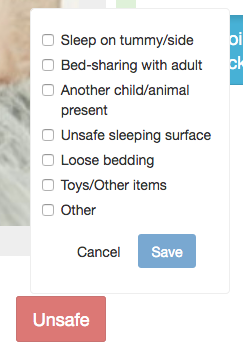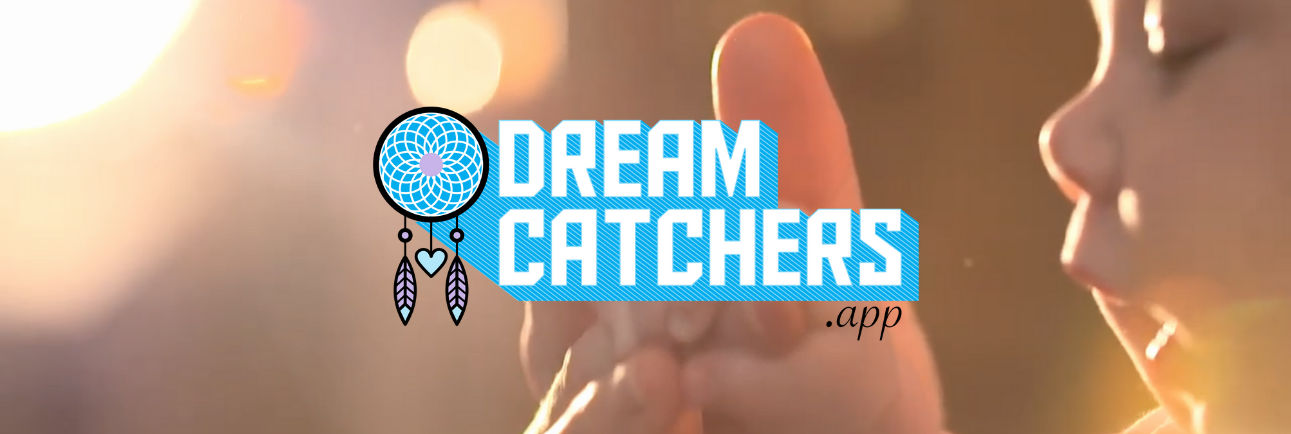Yes, you heard that right! Stall Catchers, a citizen science game tackling Alzheimer's disease, just had a spin-off, called Dream Catchers!
Dream Catchers is very similar to its predecessor... but it's tackling SIDS - Sudden Infant Death Syndrome.
What's SIDS and safe sleep?
Sudden Infant Death Syndrome, or SIDS, is the unexplained death of a seemingly healthy baby less than a year old. SIDS is the leading cause of death of infants 1 month to 1 year old in developed countries.
Researchers don't yet know what causes SIDS. But there are proven ways to reduce the incidence of SIDS, particularly by practicing "safe sleep"!
According to the American Academy of Pediatrics, a safe sleep environment for infants is characterized by:
- Placing infants on their back to sleep
- Using a firm sleep surface, such as a mattress
- Room-sharing without bed-sharing
- Avoiding soft bedding such as blankets, pillows and bumper pads
- Avoiding hazardous objects near the infant in the sleeping area
Following these safe sleep practices, can help reduce the chances of SIDS happening to your baby.
What is the purpose of Dream Catchers?
We created Dream Catchers with several goals in mind. First and foremost, we need your help labeling as many infant sleep images as possible! This will help train machine learning models to recognize unsafe sleep conditions from an image.
In the game, you look at images of sleeping babies and identify them as "Safe" or "Unsafe", based on the posture and sleeping environment of the baby. If you think the image depicts unsafe sleep, we ask you to specify in which ways do you think it's unsafe:

We've already had a quick look in how well you are doing labeling sleep images - read more in this post.
We are validating the platform right now, and if we prove that we can get reliable enough crowd labels on infant sleep images (and it looks like we can!), we will be uploading new datasets, each of which will contribute to training machine learning models.
In the long run, this research could help create powerful automatic tools to detect unsafe sleep, conduct parent behavior studies, identify best ways to train parents about safe sleep, and open various other research pathways!
Moreover, Dream Catchers is a education tool in itself. By helping us label infant sleep images, parents (and grandparents! and siblings!) can learn about safe and unsafe sleep, and become more aware of best sleep practices.
In Dream Catchers, parents are helping parents to rid the world of SIDS.
Who is behind Dream Catchers?
Dream Catchers was created by us - the Human Computation Institute, and the creators of Stall Catchers! :) But obviously we didn't do it alone!
We are partnering with several organizations to make this happen, including Cribs for Kids, Aaron Matthew SIDS Research Guild at Seattle Children's Hospital and Microsoft Philantropies.
How is Dream Catchers different from Stall Catchers?
The main difference between the two games (despite the fact that they are tackling two very different research topics!) is that in Dream Catchers you are looking at images, not movies. Therefore there is no scrolling or playing of videos, and all of those interface elements have been removed. And even though we still call the main Dream Catchers interface the "virtual microscope", as it is called in Stall Catchers and its predecessor, Stardust@home, no microscopes are involved! :)
However, exactly as in Stall Catchers, you have only two choices for labeling each image. In Dream Catchers those are "Safe" and "Unsafe". You can also flag an image if it seems wrong in any way (e.g. there is no baby, the baby is not asleep, there's personally identifiable information present in the image, etc.). If you think the image depicts unsafe sleep, you also need to indicate in what specific ways it is unsafe. But that's done by selecting the relevant options in a checklist, as opposed to indicating stalls in Stall Catchers which is done directly on the movie itself!
The rest is pretty much the same! You get points for each correct "training" label, which we know the answers to, and a token amount of points for the "Maybes" or the "real" images, which haven't yet bene labeled by experts. There's the "blue bar" indicating your sensitivity (how well are you labeling "real" images), score rubric, teams, leaderboards, levels... Everything you're used to, if you ever played Stall Catchers! :)
Why "Dream Catchers"?
A lot of thought went into this name! First of all, we needed something that's related to sleep... and possibly similar to "Stall Catchers", as those were going to be two very similar citizen science games. "Dream Catchers" certainly serves that function!
Moreover, we realized, a "dreamcatcher" is of course the well-known Native American artifact, traditionally hung over cradles for protection.
Ancient legends about the history and origin of the dreamcatcher exist among several Native American tribes, but chiefly through the Ojibwe and Lakota nations. While many cultures find spiders to be creepy crawlers, the Ojibwe people found them to be a symbol of protection and comfort. According to the Ojibwa story, a mystical and maternal "Spider Woman" served as the spiritual protector for the tribe, especially for young children, kids and babies. As the Ojibwe people continued to grow and spread out across the land, The Spider Woman found it difficult to continue to protect and watch over all the members of the tribe as they migrated farther and farther away. This is why she created the first dreamcatcher. Following her example, mothers and grandmothers would recreate the maternal keepsake as a means of mystically protecting their children and families from afar. - from Legomenon
By being a dream catcher on "Dream Catchers" you can help protect babies from SIDS. After all, we all dream of a world without it, right? :)
How to become a dream catcher?
Head straight to dreamcatchers.app, click Join, register, and play!!



